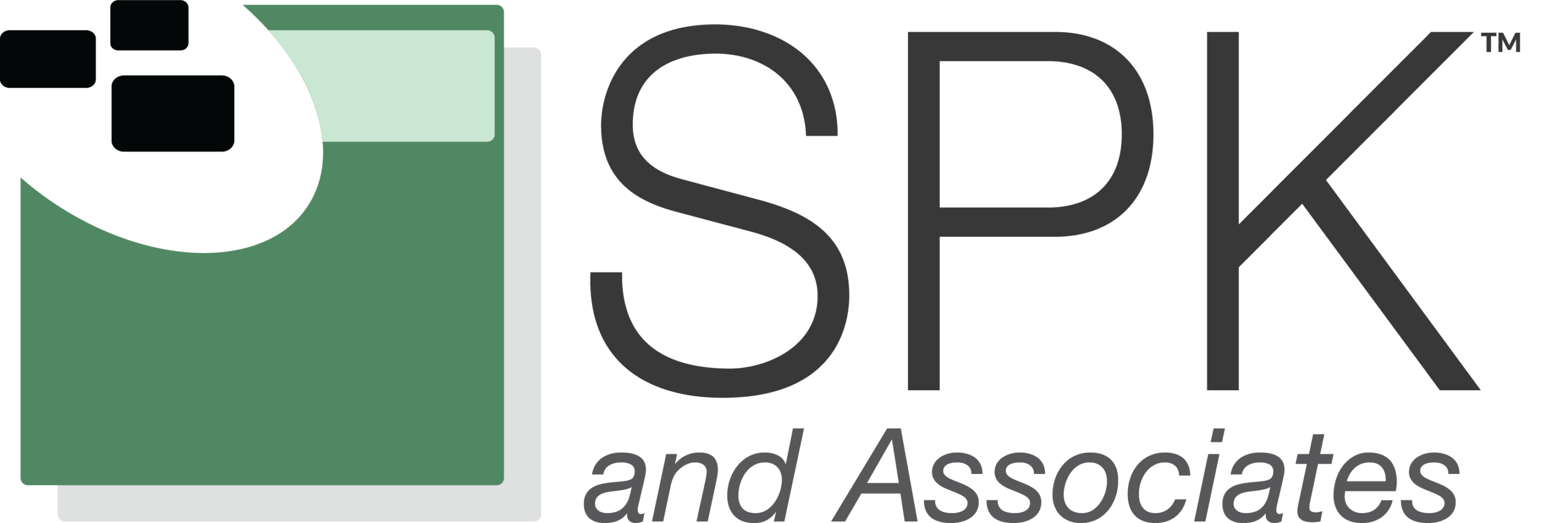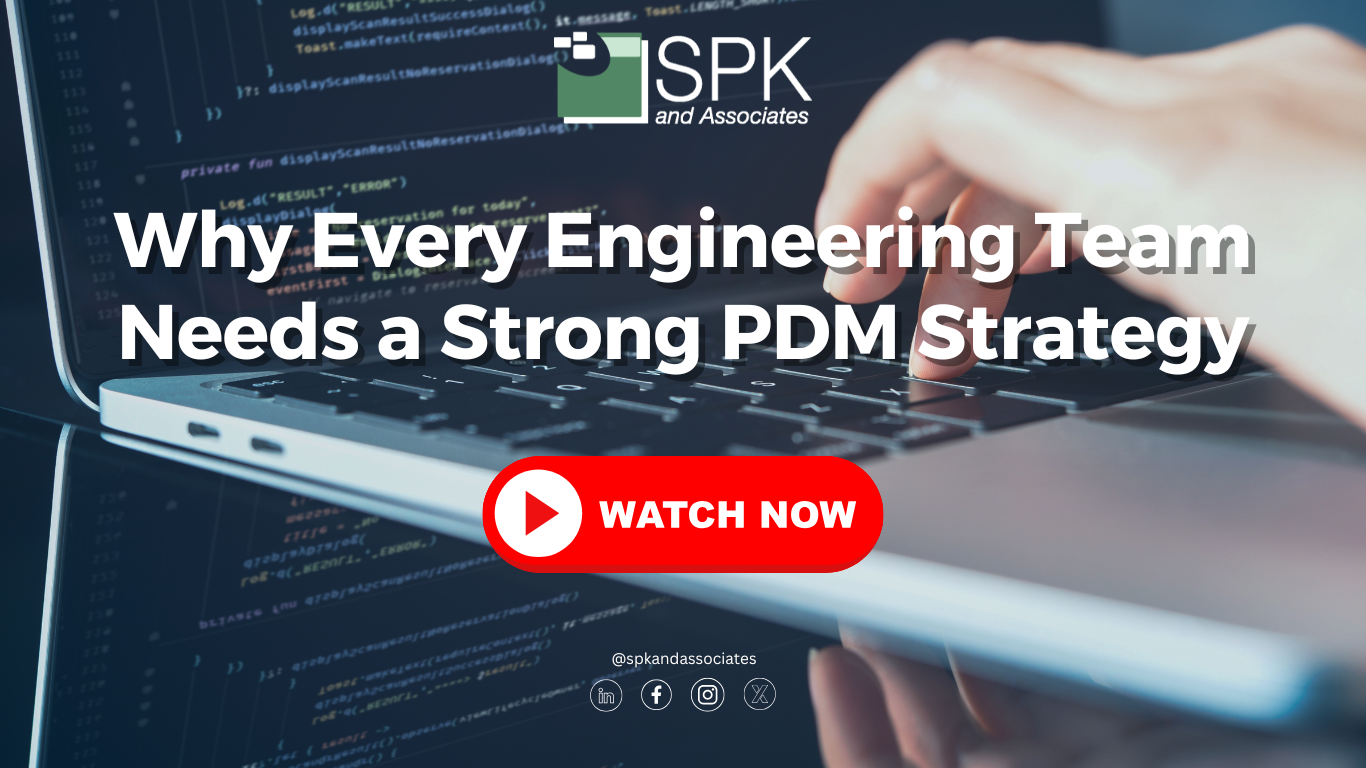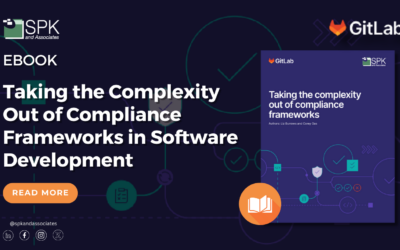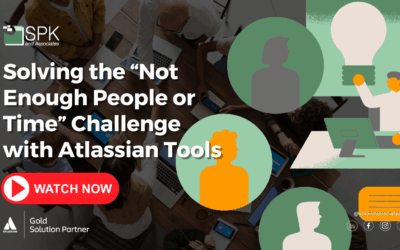Welcome to Why Every Engineering Team Needs a Strong PDM Strategy
Hey everyone and welcome back to our vlog series where we talk about all things engineering, IT, and innovation. I’m Michael Roberts, Vice President of Sales and Marketing here at SPK and Associates. Today we’re here to ask some questions around PDM strategy with our discussion entitled “Why Every Engineering Team Needs a Strong PDM Strategy.” I’m joined today by Edwin Chung. Edwin, it’s great to have you back and with us again. So feel free to introduce yourself.
Hey, my name is Ed Chung. I am VP of Professional Services here at SPK and I love PDM and I’m happy to talk about it.
The Importance of a PDM Strategy
Awesome. So today we’re going to talk about something that’s not always in the spotlight, but it’s absolutely critical for engineering teams, and that’s having a strong product data management strategy—PDM strategy. So Ed, let’s get right to it. First question here: can you explain a little bit around the key components of a robust PDM strategy and how that can impact the overall engineering product success?
Yeah. So I think a very key thing here for PDM—and let me specify that PDM is often used in, I’ll call it mechanical engineering, but software engineering uses it too, right? They just call it Git. Git is a form of PDM. And a key component is consistency. When I go into my PDM or Git or somewhere, I want to get something specific, and it should always come out the same. If I’m looking for version five or revision B of something, I want revision B of something. I do not want slightly off from B. And that’s the other part—the versioning. The version needs to be there so that when I go back and I want to look at an old version or a new version, again, consistency. Not just for me, for everyone else who is working on the same project. That is the number one bullet point for PDM.
Enabling Collaboration Across Global Teams
Gotcha. So how does implementing a PDM system facilitate better collaboration and data management amongst maybe dispersed engineering teams?
Oh, haven’t we all been there? I emailed the Word document to three people and then Amy edited it, and Bob edited it, and Charlie edited it, and then they had to put it all back together. And we did it, but it was a pain in the neck. Well, guess what? That’s great for that one Word document, but when you’re working with a 10,000-part assembly—or software engineering is super complicated too, right? A 5,000-file software library—you can’t do it. It’s just not feasible at all. At best, it’s not practical, and at worst, it’s not possible. So having a PDM system gives you that consistency. Then you can now collaborate freely with these people and you can open up like, hey, I’m in New Jersey, I’m working on it, I stopped working on it, and then that person in—this is how you really accelerate—that person coming online in an Asia time zone, they got the newest version, they’ve got the correct version. Your changes haven’t overwritten their changes from the day before, and you’re going real crazy. Now you get to the next, Europe or that region of the world times out, and they keep picking up the work. You can get three times the work, three times the velocity in your projects by doing that.
Common Challenges Without a PDM Strategy
Right. So in your experience, what’s the most significant challenge that engineering teams have without a PDM system, and how does a PDM system address that?
This is a hard challenge. So with any system that’s called controls, you always have to balance the correct amount of controls—whether those are workflows or permissions or rules or processes. Processes are part of the system also. You have to balance velocity with other things. I think a very common problem—I don’t know if I want to use the word problem, but I used it already—a very common situation we come back into is: “Hey, Ed, come in and help us. We’ve got this PDM that was implemented by one engineer—a pioneer engineer, a great guy. He put it in, and it was used by two people, and then it was used by five people, and then it was used by 25 people across six different countries, and now it is a mess.” Like, we don’t know what’s going on. We have to come back and get a little more process. So somewhere in there is, you know, I would never stifle an engineer for like one or two engineers when I used to collaborate, but at some point—at five people or ten people or maybe even at one person—someone should check: are we doing just general good practices for data management and data security and data privacy?
I didn’t talk about it, you didn’t ask, but there are a bunch of privacy issues with sending information through Asia and Europe and the Americas. Privacy issues with the EU also, right? For things like that.
Real-World Scenarios: When Teams Outgrow Manual File Storage
Yeah. We could probably spend days on this topic in terms of the challenges. I know some of the other conversations that I’ve had with some of the folks on your team have been assemblies where three people are working on the same assembly, or two people need a PDM because they’re literally overwriting each other on a file on Google Drive or OneDrive. There are a number of challenges regardless of the team size. It almost is infinite.
Exactly. And then this common thing where again—you know, I should take it back. If you were one or two engineers in the same room, or even not in the same room—you can get away with, haven’t we all done this? I made a copy of that document and put underscore A or underscore Ed or underscore Michael at the end, right? And then I merged it back. You can do that. But at the cost of—if you’re doing software, Git is a little bit free. In SolidWorks PDM, if you’ve got SolidWorks Professional, it’s included. If you’re using Onshape, PDM is included in Onshape for free. I highly encourage you, me, us, everyone to take a few minutes to look into it. Michael here posts a lot of blog posts on the SPK website that can help you get started. I think there are videos on the YouTube channel also that can help. Again, this is one of those places five minutes of research can really pay dividends back in the long run.
Final Thoughts and Next Steps
For sure. Ed, thanks for sharing your insights here and your experience. I appreciate your time. For anyone watching, if your team is still struggling managing product data manually or using generic file storage like we talked about, maybe it’s time to rethink that strategy. PDM isn’t just a tool. It’s actually an enabler for better engineering. If you’re ready to explore how to properly do that in your organization, head over to spkaa.com or reach out to our team. We’d be happy to help you evaluate your current setup and make any recommendations that would get you to a better place. Thanks for joining. Be sure to like and subscribe to the SPK channel for more. And until next time, stay innovative. Thanks.







